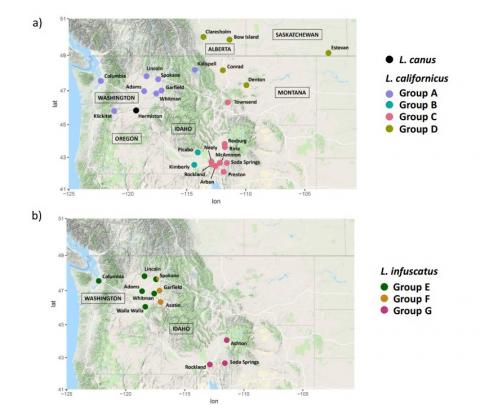The larvae of click beetles (Coleoptera: Elateridae), known as "wireworms," are agricultural pests that pose a substantial economic threat worldwide. We produced one of the first wireworm genome assemblies (Limonius californicus), and investigated population structure and phylogenetic relationships of three species (L. californicus, L. infuscatus, L. canus) across the northwest US and southwest Canada using genome-wide markers (RADseq) and genome skimming. We found two species (L. californicus and L. infuscatus) are comprised of multiple genetically distinct groups that diverged in the Pleistocene but have no known distinguishing morphological characters, and therefore could be considered cryptic species complexes. We also found within-species population structure across relatively short geographic distances. Genome scans for selection provided preliminary evidence for signatures of adaptation associated with different pesticide treatments in an agricultural field trial for L. canus. We demonstrate that genomic tools can be a strong asset in developing effective wireworm control strategies.
Map of sampling locations color-coded by genetically distinct groups identified using PCA and sNMF.
a L. canus, colored black; and L. californicus, with group names (A–D) following the circles in Fig. 4a. b L. infuscatus, with group names (E–G) following the circles in Fig. 4b. Samples from both Groups E and F were found in Spokane, and the pie chart shows the proportion of individuals from each group for that location. Map data: Google.
| GEM3 author(s) | |
| Year published |
2020
|
| Journal |
Communications Biology
|
| DOI/URL | |
| GEM3 component |
Mechanisms
|
| Mentions grant |
Yes
|

